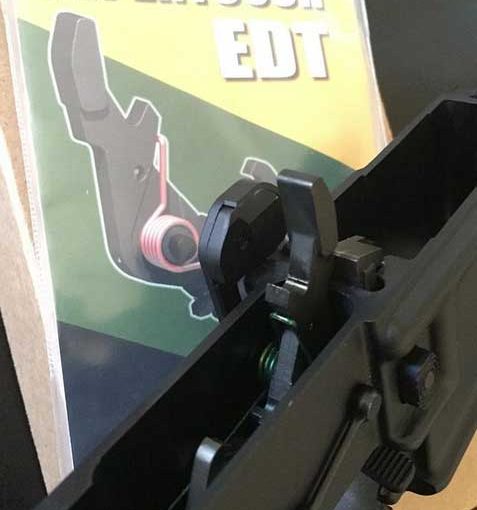Hiperfire EDT Review
The Hiperfire Hipertouch EDT Enhanced Duty Trigger is a performance responsibility trigger upgrade for AR-15 and AR-10 rifles. The Enhanced Duty Trigger has user adjustable trigger weights of 4½, and 5½. HIPERTOUCH has taken their game trigger feel and put it in a responsibility trigger weight for an affordable price. Hiperfire triggers maintain Eugene Stoner’s natural design elegance during performance. Considering that the AR-15 first appeared, shooters were attempting to lighten and smooth the AR trigger pull. There have been one- and – 2 phase activates with fixed weights ranging from between 2½, and 4½, pounds with a single glass rod, trigger break.
Designers of two-phase products have changed the functional location of the principal sear. Many of those triggers require factory or user calibration and maintenance. Wear or improper calibration trigger malfunctions or doubling. Some systems used power springs that have compromised primer ignition. The EDT was designed for discriminating users who require a trigger pull weight of 4½, pounds, which tends to add law enforcement shooters and those with a multi-purpose contemporary sporting rifle. EDT activates user adjustable to 4½, plus and by interchanging two hammer springs and pounds & frac12, 5. The also, implies that even following a period of break-in and heavy use, the cause weight will remain above the two thresholds.
Terry Bender is a talented engineer. Back in 2003, he was somewhat bored and miserable with available large caliber semi-auto rifles. Rather than whining about it on the world wide web, he took it as a personal project and designed a new rifle. Four patents afterward, he was showing investors his baby and looking to move into production. One of them watched the prototype fire control team and asked whether it might be adapted for the AR-15. A week after, Hiperfire was organized as a Limited liability company, and also the very first AR15 trigger patent was applied for.
Terry has worked his magic again, taking the geometry and sense of the HIPERTOUCH 24E trigger and placing it into a responsibility ready trigger. The reason conventional AR activates have a heavy trigger pull weight is the high trigger impact force, which generates lots of friction. The design geometry of the EDT increases the hammer drop energy within the MIL spec trigger. This lets you spark army and primers, as well as 22 rimfire ammunition.
Everybody has a scare again and again. This results from a subconscious reaction to the blast and noise of the shooter. If you would like to see this for yourself, simply dry fire. Every once in awhile, you may flinch and dip the rifle as you pull the trigger. The sear design paradigm employed at the 24’s competition trigger has been preserved in the EDT and helps a shooter overcome that flinch. It provides you pull with only a sign of creep, a clean break with small over travel, then a fast, decisive reset to pulling weights appropriate for practical or obligation usage.
EDT lock time is faster than MIL specification because of the usage of the significant springs and by locating the center of hammer mass closer to the pivot axis, makes it spin faster. Requires are triggered by A duty reliability. Debris and carbon fouling can collect at lower part of the disconnector channel of stock AR triggers, inducing the disconnector to jam. The EDT trigger slot has holes, making the disconnector self-cleaning as it toggles. At a reasonably common malfunction, a blown primer cup or debris may get beneath the trigger, preventing flashed. To avoid this, the back side of the trigger was increased and raised, increasing the clearance with the floor of the fire control pit.
